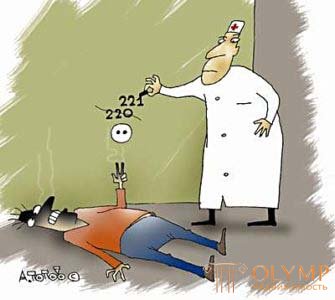
Installation rules
Wiring should be laid according to the developed plan. The basis of this document, which subsequently greatly facilitate your life, is based on two principles:  • the convenience of use.
• the convenience of use.
• electrical safety.
When developing a plan you need to take into account several important points.
• Electric meters, junction boxes, sockets and switches should be located in accessible places for maintenance and repair, and live parts should be closed.
• Switches are placed at the entrance to the room at a height of 0.9 - 1.2 m so that the open entrance door does not block access to them. For convenience, switches in one apartment, as a rule, are located in all rooms on the same side.
• Sockets are installed in places where electrical equipment is intended to be installed at a height of 20–30 cm from the floor level. 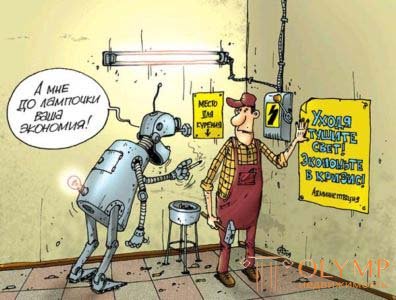 According to fire regulations, the number of outlets should be at least one for every full and incomplete 6 m2 of floor space, and in the kitchen - at least three.
According to fire regulations, the number of outlets should be at least one for every full and incomplete 6 m2 of floor space, and in the kitchen - at least three.
The installation of switches and sockets inside the toilets and bathrooms is only allowed with the installation of an RCD.
It is also forbidden to install sockets closer than 50 cm from grounded metal devices (pipes, batteries, sinks, gas and electric stoves).
Wires are laid only on vertical and horizontal lines, and their location must be accurately known to avoid damage when drilling holes, driving nails, etc.
You must ensure that the wire does not come into contact with the metal structures of the building. 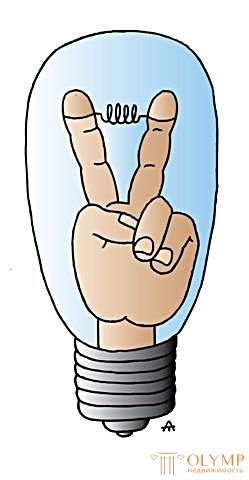 In the premises of the connection and branch wires with all types of electrical wiring are performed in the junction and tap-off boxes.
In the premises of the connection and branch wires with all types of electrical wiring are performed in the junction and tap-off boxes.
There should be no fuses and switches in the conductors providing protective grounding or grounding.
These are the basic provisions on which to rely when drawing up an apartment wiring plan. Basically, these rules relate to electrical safety. Indeed, when working with electricity, one should not hope “at random”. Accuracy during the work will save you in the future from many troubles.
Electrical safety.

The basic rule of protection against electric shock states that dangerous live parts should not be accessible, and accessible conductive parts should not be dangerous. Among the measures of protection of various devices, an important place is occupied by the so-called double insulation.
With this technical solution, safety is provided by enhanced insulation of current-carrying parts, which is also duplicated for greater reliability. Modern wires and cables have double insulation, as well as equipment that, according to the method of protection against electric shock, is divided into classes from zero to third. The choice of class depends on the type of room (wet, dry, hot, dusty) and the purpose of the device.
The simplest protection (zero class) is applied in electrical equipment designed for operation in places that are not hazardous from the point of view of potential potential for electric shock (for example, in living rooms where it should be dry). 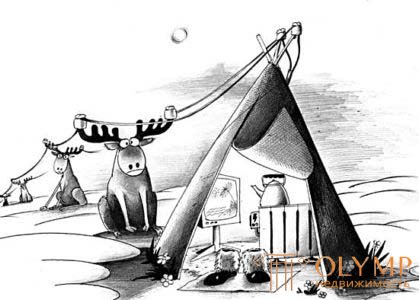 The most difficult protection, of the third class, is used where the danger of an electric shock is most likely (in bathrooms, in damp basements).
The most difficult protection, of the third class, is used where the danger of an electric shock is most likely (in bathrooms, in damp basements).
No matter how serious the technical protection measures may be, no electrical installation can function normally without automatic shutdowns of power sources. Because really effective protection of a person against electric shock can be realized only by turning off the power supply. This operation is performed using automatic circuit breakers and protective shutdown devices (RCDs). The first reacts to a short circuit in the electrical circuit, the second - to non-standard leakage currents resulting from direct or indirect contact of a person with current-carrying parts, violation of integrity or ignition of the wiring. With the help of safety machines ensured the safety and operability of wiring and electrical appliances. RCD first of all saves the person a life and protects the equipment from ignition. more about RCD, recommendations for use.  Another safety rule is to ground and zero everything that can be equalized and equalized any potentials. This is done in order to exclude in the house the possibility of stresses that are dangerous to people's lives and disrupt the normal operation of appliances.
Another safety rule is to ground and zero everything that can be equalized and equalized any potentials. This is done in order to exclude in the house the possibility of stresses that are dangerous to people's lives and disrupt the normal operation of appliances.
Of great importance for ensuring the safety conditions in an electrical installation is the correct implementation of a potential equalization system. The essence of the system is to integrate with the help of a grounded bus all parts of engineering communications capable of conducting current.
All protective conductors, metal pipes of building communications and pipes between buildings, metal parts of building structures and lightning protection, heating, ventilation and air conditioning systems, gas supply, metal enclosures of electrical equipment and elements of the grounding device are connected by a single chain.
The stages of wiring a typical apartment.

1. Remove the old apartment panel, open and, where necessary, hidden wiring. Power supply is temporarily taken from the cable entry to the apartment (make the connection in accordance with the general electrical rules).
2. In the walls on the applied marking (from the shield) with a saw “grinder” with an abrasive circle, cut out the contours of the grooves to a depth of 2–3 cm. Repeat the same operation on the plastered ceiling.
3. The grooves within the cuts gouge out using a perforator with a nozzle to a depth sufficient for laying a polyvinyl chloride (PVC) corrugated hose into which you must tighten the cable beforehand.
4. In places where sockets, boxes, switches are installed, punch or drill with a special cutting nozzle, drill holes for them.
5. In the interior partitions, punch holes through the perforator and extend the protective corrugated PVC hoses from one room to another.
6. In a modern apartment, electricity-consuming appliances are placed literally at every step, and sockets are needed to connect them. According to the new requirements for such energy-consuming electric apparatuses as a microwave oven, washing machine, boiler, a separate rosette group or even two is needed, not to mention a home sauna. But there are still numerous chandeliers, floor lamps, sconces. That is, it is better not to carry out electrical work without a project agreed with the authorities of the power supply and the State Power Engineering Supervision. In addition, the new electrical installation according to existing rules must be certified. You can, of course, do everything yourself, but our duty is to warn about the possible consequences before a technician from the housing department finds your mistakes. 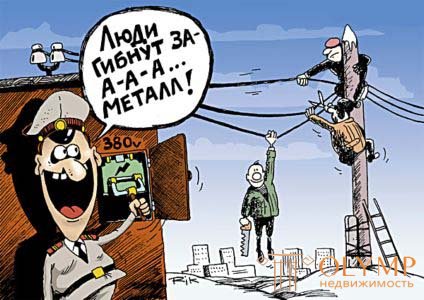 7. Install a new built-in or hinged flat panel.
7. Install a new built-in or hinged flat panel.
8. Output the phase, zero protective and zero working conductors of the internal wiring and power cable to the shield through PVC hoses and connect to the ground terminals, protective cutout device (RCD), automatic circuit breakers, electricity meter and total circuit breaker 40 A.
9. The installation devices in the shield (RCD, circuit breakers) are interconnected by means of a bus.
10. Put the PVC hose with the wires pre-drawn into it and put it in the gate so that its end goes into the niche for the installation box or the junction box, then temporarily fix it on the wall. (in the already laid and plastered corrugation subsequently it is almost impossible to tighten the wires)
11. Fix the ends of the wire in the terminals of the corresponding switchgear. On the walls in places where the project was supposed to connect electrical devices, there are junction boxes, sockets and switches. Often flat wire- "noodles" just covered over with a layer of plaster. In this case, the easiest way to cut it and leave it in the wall. If the wire is laid in the channel or pipe, then you need to tighten in its place a new one, while saving energy and money on gouging the walls. 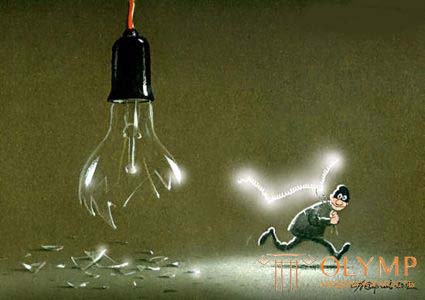 12. Fix the plastic boxes for the installation of sockets and switches and the junction boxes, in which the ends of the wires are inserted, fasten to the wall.
12. Fix the plastic boxes for the installation of sockets and switches and the junction boxes, in which the ends of the wires are inserted, fasten to the wall.
13. Connect the wires in the junction boxes with screw terminals. The main thing in electrical engineering is reliable contacts. Ideally, the ends of the copper wires in the joints should be tinned with tin-lead solder and insulated with PVC tape. (The adhesive layer of the tape has a tendency to dry, and the tape to unwind, therefore it is necessary to put a piece of heat-shrinkable tube of suitable diameter over the tape and heat it.)
Non-soldered joints are oxidized with time, oxidized, contacts in them are broken, leakage currents appear, sparking - there is a risk of fire. Therefore, Western methods allow only connections at the terminals.
14. Connect the wires to the three-way socket box “under the screw”. After that, install the socket in the box and fix it on the wall in the horizontal plane with the help of adjusting screws. Set the switch in the same way.
Что бы оставить комментарий войдите
Комментарии (0)